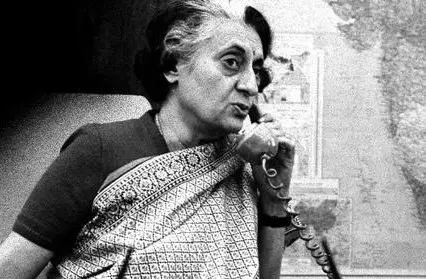
In 1975, Prime Minister Indira Gandhi invoked constitutional provisions to declare a state of Emergency, suspending civil liberties and democratic processes
The Legal Coup: How the Constitution Enabled Its Own Suspension
Democracy Derailed- In a paradox that still stuns constitutional scholars, Indira Gandhi’s Emergency was not a military coup or a violent takeover, it was a legal maneuver. On June 25, 1975, President Fakhruddin Ali Ahmed, acting on Gandhi’s advice, declared a National Emergency under Article 352, citing “internal disturbance.” This vague clause, later amended in 1978 to “armed rebellion,” gave the executive sweeping powers to override democratic norms.
Table of Contents
The trigger? A landmark verdict by the Allahabad High Court that found Gandhi guilty of electoral malpractice and disqualified her from Parliament. Facing political collapse, she turned to the Constitution, not to uphold it, but to bend it to her will.
Once the Emergency was declared, Article 358 automatically suspended citizens’ rights under Article 19, including freedom of speech and assembly. Article 359 went further, allowing the government to suspend the right to seek legal remedy for violations of fundamental rights under Articles 14, 21, and 22. In effect, the courts were gagged, and the people were silenced.
MISA, Media, and Mass Arrests: The Machinery of Control
With the legal framework in place, the government unleashed a wave of repression. The Maintenance of Internal Security Act (MISA) became the regime’s bluntest instrument. Over 100,000 people were detained without trial, including opposition leaders like Jayaprakash Narayan, Atal Bihari Vajpayee, and L.K. Advani.
The press, once a pillar of democracy, was shackled. Pre-censorship was imposed, and newspapers were forced to submit content for government approval. The Indian Express famously protested with a blank editorial, a silent scream against the silencing of a nation.
The judiciary, too, was compromised. In the infamous ADM Jabalpur v. Shivkant Shukla case, the Supreme Court ruled that during the Emergency, even the right to life and liberty could be suspended. Only Justice H.R. Khanna dissented, a stand that cost him the Chief Justiceship but earned him a place in history as a guardian of conscience.
Meanwhile, Article 356 was used to dismiss opposition-led state governments, further centralizing power. The 42nd Constitutional Amendment, passed during this period, curtailed judicial review, extended Parliament’s term, and gave primacy to Directive Principles over Fundamental Rights, cementing the executive’s dominance.
Democracy Derailed – Aftermath and Reckoning: Lessons from a Legal Dictatorship
The Emergency officially ended on March 21, 1977, but its scars remain etched in India’s democratic memory. The subsequent 44th Amendment rolled back many of the Emergency-era changes, making the right to life and liberty non-suspendable and tightening the conditions for declaring a future Emergency.
Yet, the episode remains a chilling reminder of how laws can be weaponized, and how democracy can be dismantled from within. Indira Gandhi didn’t break the Constitution, she used it. And that, perhaps, is the most sobering lesson of all.
As India marks 50 years since that fateful night, the question isn’t just about what happened, but how easily it could happen again.
Stay updated with the latest news on Rapido Updates. Keep yourself updated with The World, India News, Entertainment, Market, Automobile, Gadgets, Sports, and many more